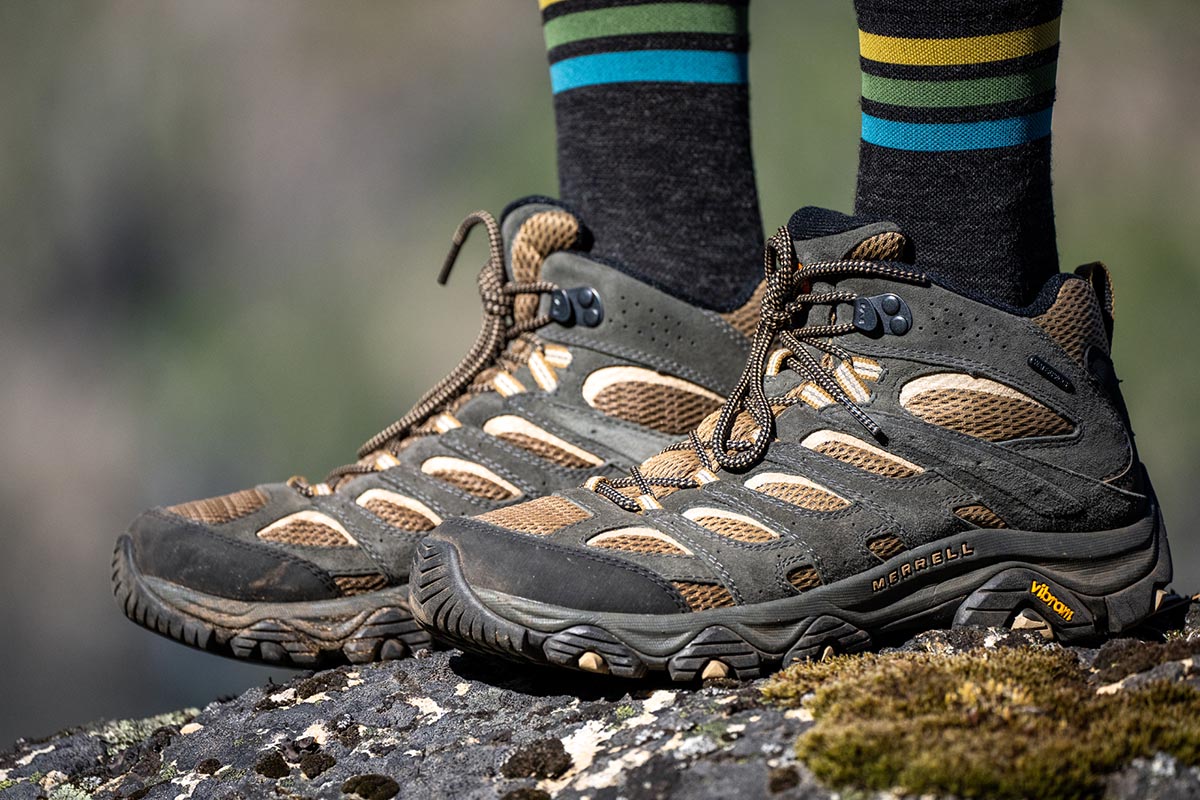
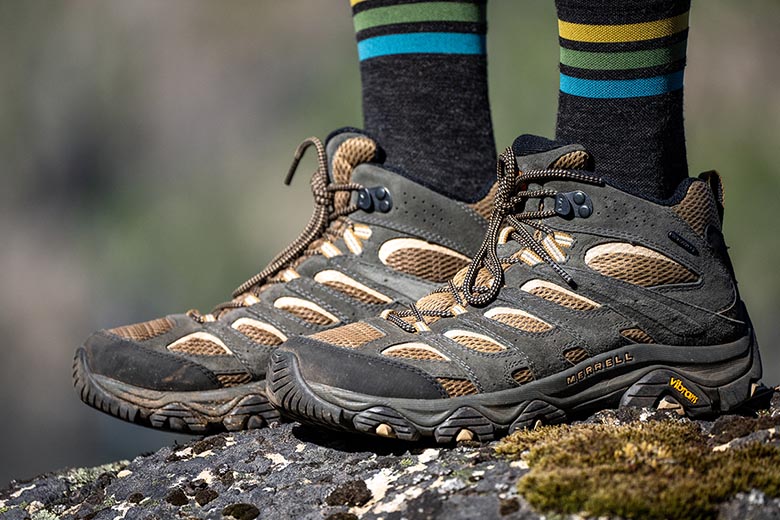
Price: $150
Weight: 2 lb. 2.6 oz. (men’s size 9)
Waterproof: Yes (in-house membrane)
What we like: Standout price for a proven and extremely comfortable day hiking boot.
What we don’t: Middling traction; lacks the nimble feel of many modern alternatives.
See the Men's Merrell Moab 3 Mid WP See the Women's Merrell Moab 3 Mid WP
Merrell’s Moab is about as classic as hiking boots come and an extremely popular first pair of hiking footwear for many (including multiple editors on our staff). We tested one of the best-selling variations—the mid-height waterproof model—which checks in at a reasonable price and offers a great fit and high levels of comfort for day hikes and light backpacking. It’s not a technical standout, and the cheaper build does come with some compromises in traction and weight, but it’s nevertheless a proven design at a truly excellent price point. Below we outline our experiences with the Moab 3 Mid. To see how it stacks up to the competition, see our article on the best hiking boots.
As expected from the popular design, out-of-the-box comfort is a real strong suit of the Merrell Moab 3 Mid WP. The padding around the collar and on the tongue is impressively thick, soft, and feels great even when cinched tightly. Additionally, the boot is flexible enough that it requires nearly zero break-in, and the sculpted insole cups your heel nicely, offering surprisingly good arch support considering the budget price. I hit the ground running with the Moab, taking it on a multi-day backpacking trip straight out of the box and dealt with no comfort-related issues. Another key to the Moab’s well-regarded comfort is its excellent fit, which includes a locked-in heel, reliable lacing system, and enough room in the toes for average-width feet to swell. This snug and secure fit was especially noticeable when climbing steep trails—I experienced no heel slippage or rubbing despite some unrelenting grades.
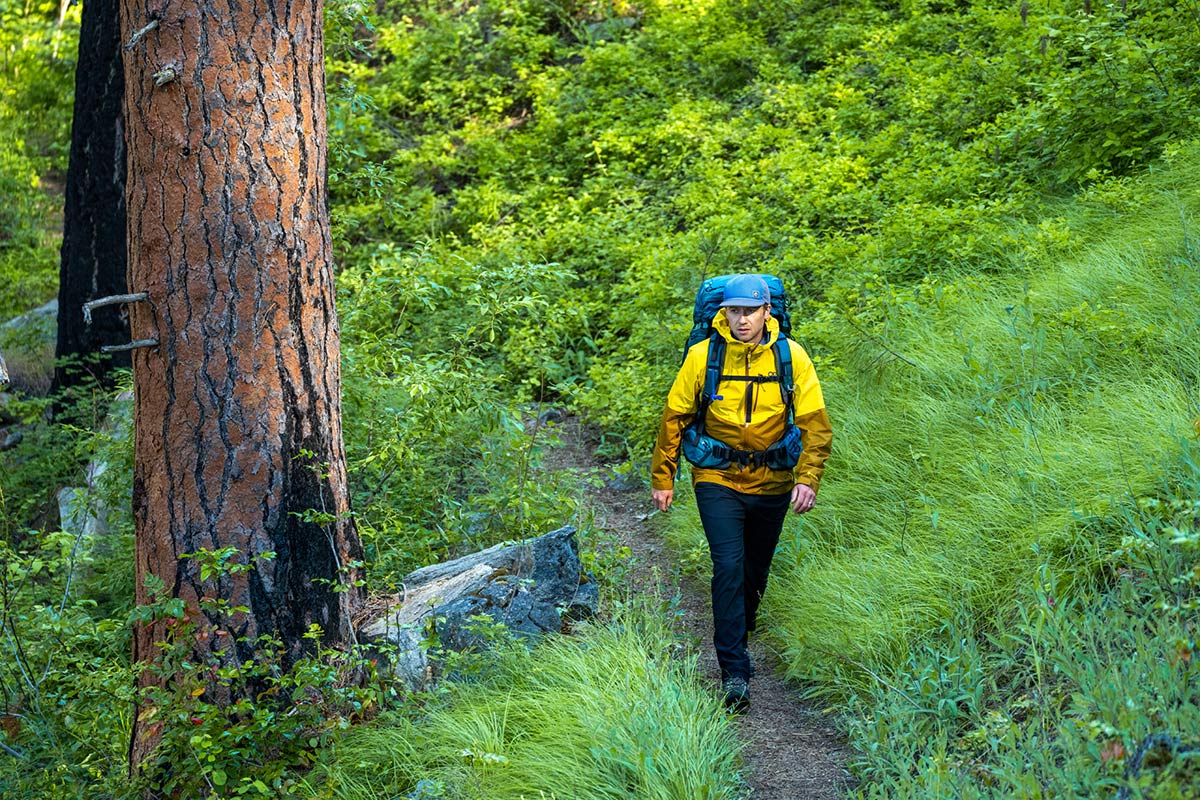
My main knock against the Moab—and this complaint carries over from the prior-generation boot—is that it lacks the modern and sporty feel of lighter and nimbler competitors like the Salomon X Ultra 4 Mid, Hoka Anacapa 2 Mid, and plenty of others. It’s moderately heavy considering the collar just covers the ankle, and it feels more like a throwback design than the running shoe-inspired models that dominate the market. If you’re aiming to cover ground quickly or prefer something that tilts more to the technical and fun end of the spectrum, you’ll likely want to look elsewhere. But if comfort is at the top of your list, we don’t think you can do better—especially for the price.
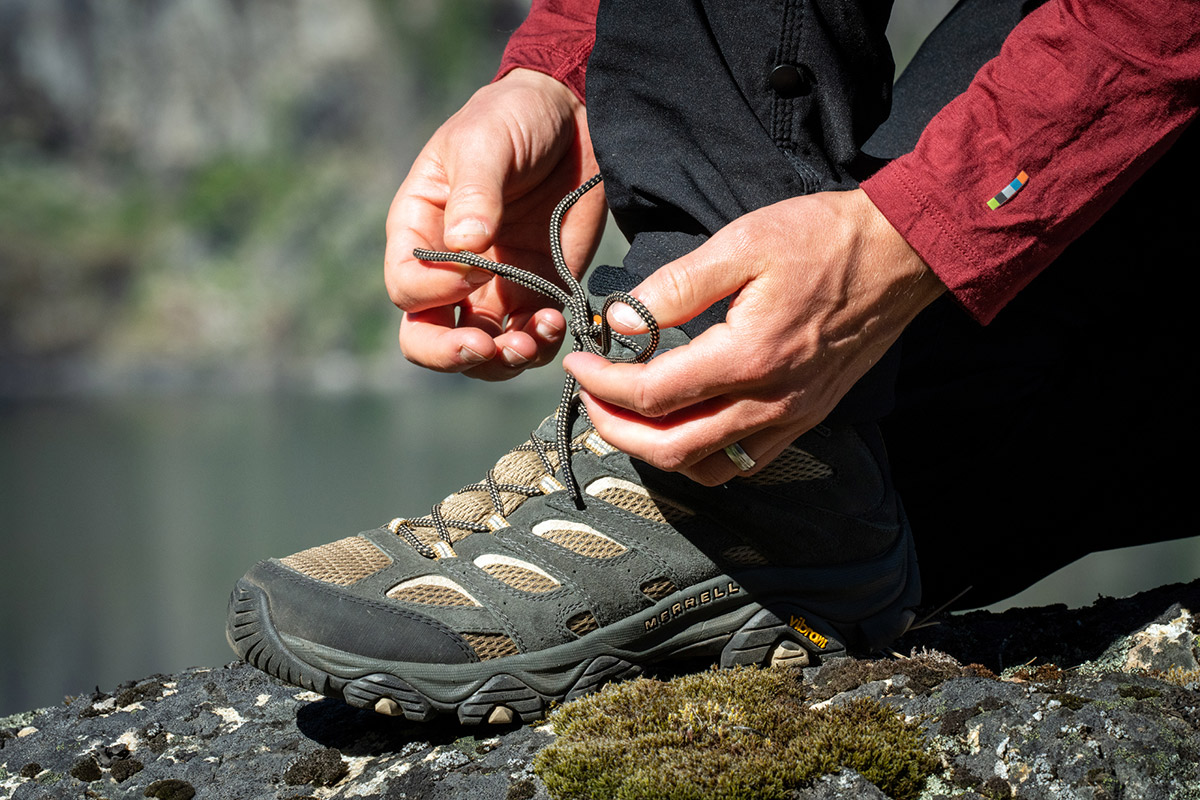
My pair of Moab 3 Mid Waterproof boots in a men’s size 9 clocked in at 2 pounds 2.6 ounces on my scale—just over an ounce less than my Moab 2 Mids. For reference, Merrell's listed weight for the latest version is 1 pound 11.1 ounces, although we consider REI's spec (2 lb. 4 oz.) to be more in-line with the boots' actual heft (as a result, we've used the latter spec throughout for comparison). As I mentioned above, this is fairly heavy considering the Moab's height, which comes just over the ankle, but the generous cushioning and thicker upper material certainly are contributing factors.
For reference, the Moab is fairly similar to direct competitors like the Keen Targhee IV WP Mid (2 lb. 8.7 oz.) and Oboz Sawtooth X Mid WP (2 lb. 6.8 oz.) but considerably heavier than more performance-oriented designs like Salomon’s X Ultra 4 Mid GTX (1 lb. 14 oz.). And for just a few ounces more, you can get a big jump in stability and grip with the Lowa Renegade GTX Mid (2 lb. 7.2 oz.), but that boot is nearly double the price. In the end, the extra weight is noticeable, but for most people, this is only a downside if you want to cover longer distances and prioritize traveling fast and light. If that’s the case, you’ll either need to increase your budget or be willing to make compromises in cushioning, support, and comfort.
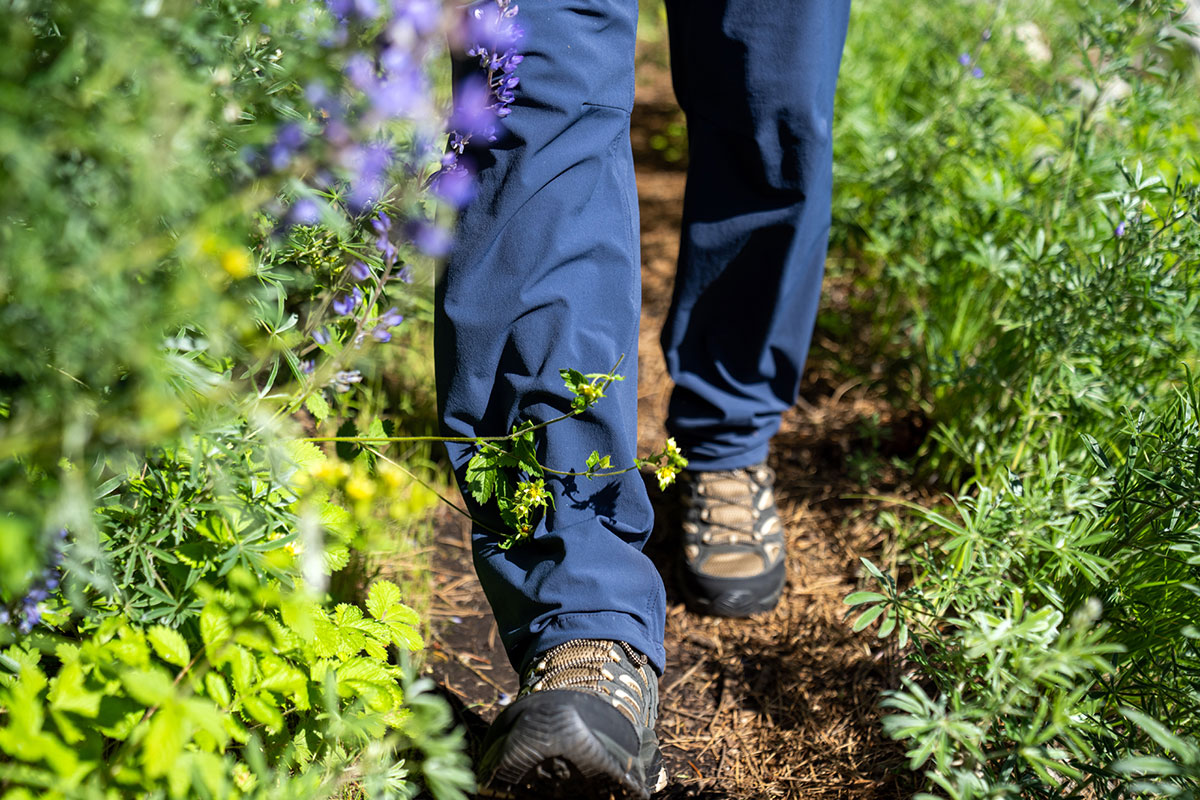
One of a few notable upgrades with the Moab 3 is the outsole, which got a fairly thorough revamp. Highlights include a stickier Vibram rubber compound and some revisions to the lugs that give it more purchase in mud. In use, however, my takeaway was pretty similar to the discontinued Moab 2: It doesn’t excel in any particular category, nor does it have any significant weakness. In other words, the Moab’s design matches what the boot is meant to do: grip well on maintained trails. The lug layout isn’t super aggressive, so it lacks the bite of premium alternatives like the Salomon Quest 4 GTX, plus it isn’t as sticky on steep rock like boots that feature Vibram’s higher-end Megagrip compound. But the firm rubber should have a long lifespan, and there’s sufficient grip for most trail use.
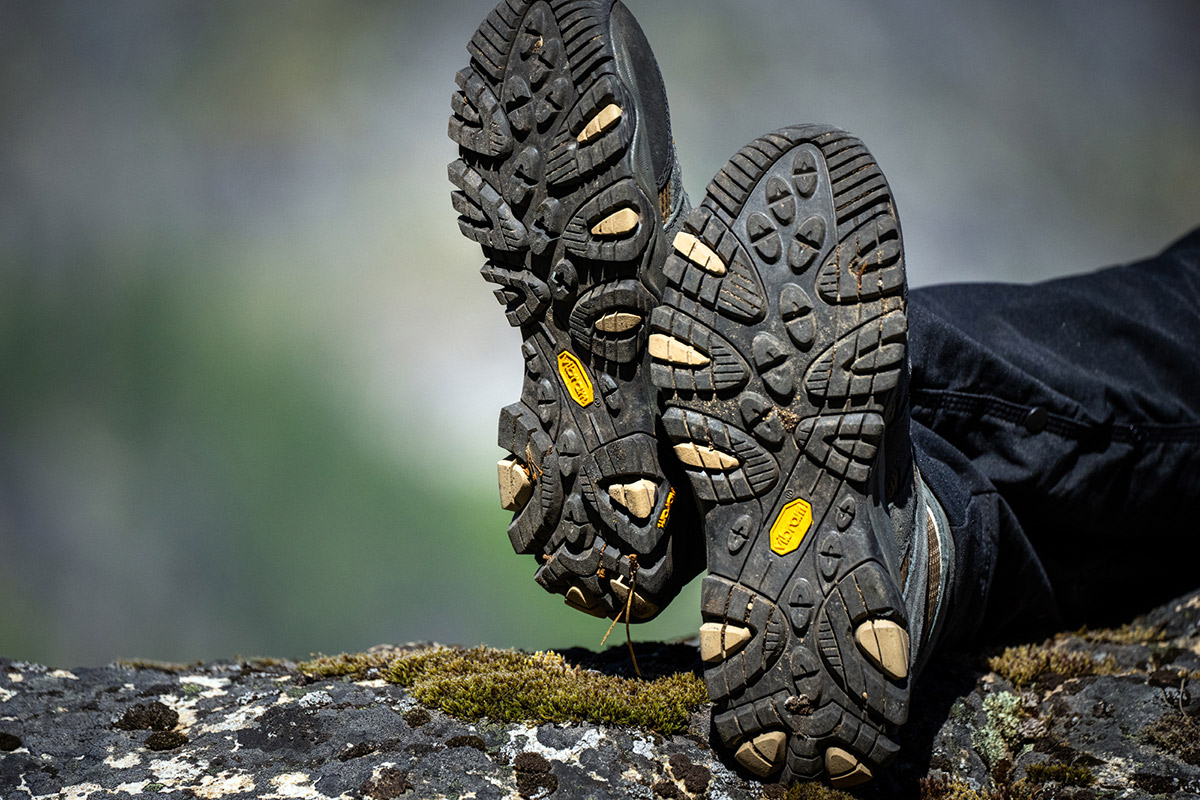
The Merrell Moab’s level of stability matches its intended uses: The boot has a fairly wide and solid base with enough structure in the heel to offer decent lateral stability, but the shorter height and fairly flexible build in the forefoot mean it’s far from a technical standout. This shorter construction was particularly noticeable when traversing a steep slope, where the boot flexed relatively aggressively downhill—the feeling was magnified by the moderately heavy pack I was carrying at the time—leaving me wanting more support. But this was a pretty isolated case, and most of the time, the flexibility was a positive for hiking comfort. Summed up, those with ambitious plans that involve rougher terrain or hauling a heavy pack will want to upgrade to a sturdier and more confidence-inspiring boot like the Salomon Quest 4 or Lowa Renegade Evo. But for sticking to well-established trails, the Moab 3 Mid is a nice match.
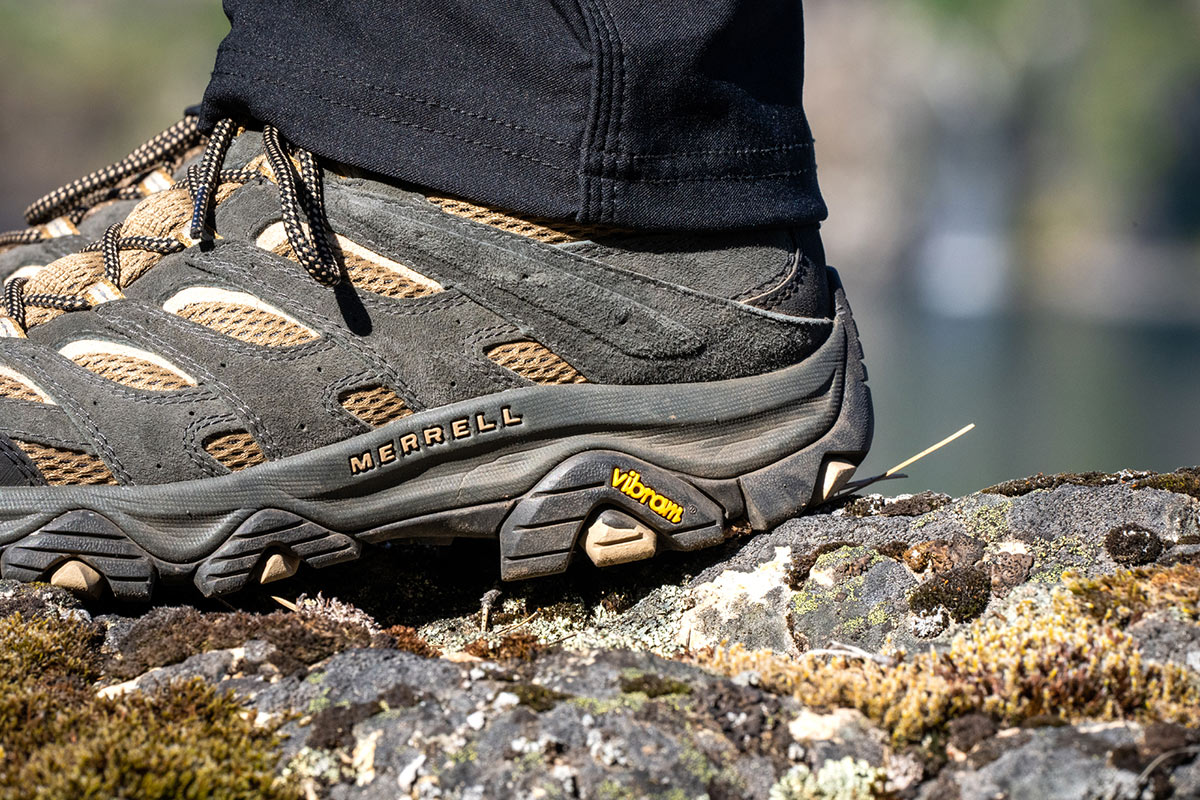
Like many entry-level hiking boots, the Merrell Moab 3 Mid Waterproof uses in-house waterproofing rather than the Gore-Tex liner found in many higher-end models. The good news is that the Moab’s hefty upper material and waterproof layer offer sufficient protection for creek crossings (up to about the bottom of your ankle), light snow travel, and occasional rain. The upper does have a durable water repellent (DWR) coating for shedding water, but I found that the large portions of mesh were pretty quick to absorb moisture during creek crossing and in wet grass. And when the upper material did get soaked—especially the leather—it took a long time to dry, even when exposed to a fair amount of sun on the trail. Note: Merrell does offer a more premium Gore-Tex-equipped model for a slight price increase.
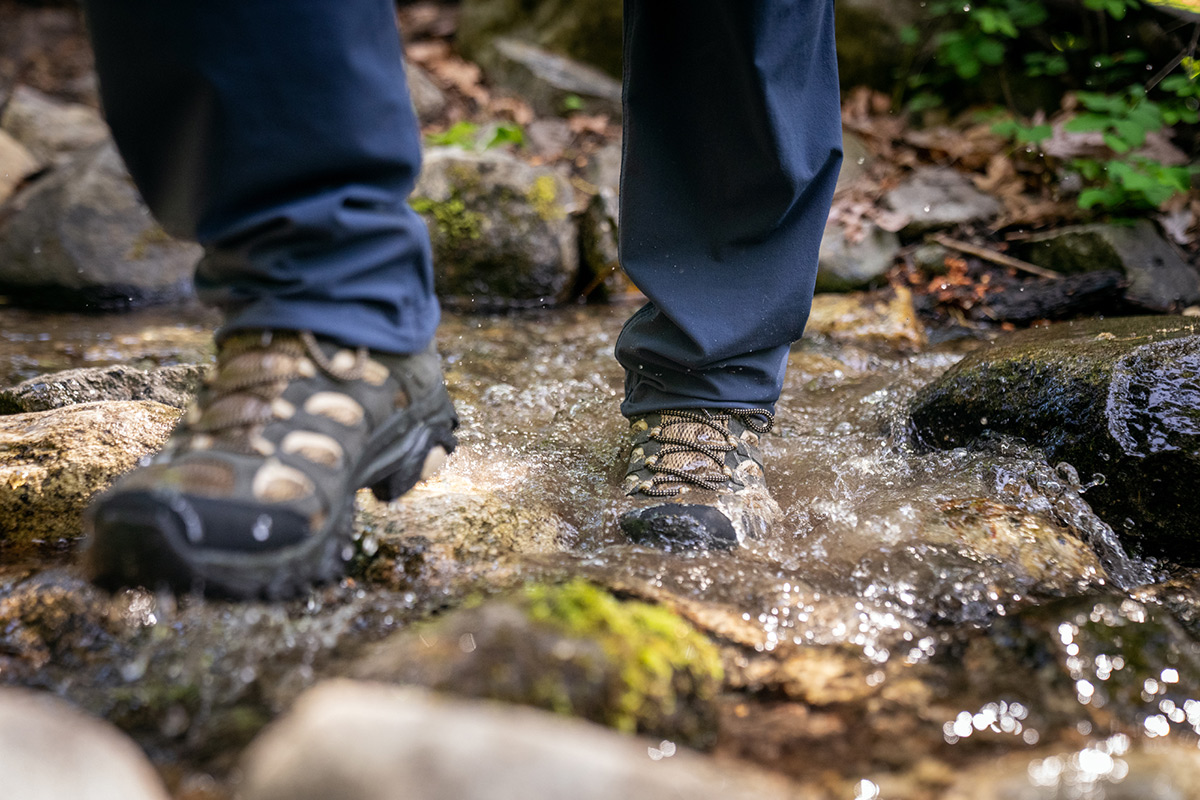
As expected with the thick construction and budget-oriented liner, the Moab 3 Mid runs warm. This was a positive during winter testing, but I had sweaty feet on a backpacking adventure in mid-June. Even on days in the mid-60s to low 70s Fahrenheit (paired light merino hiking socks), the boot’s lack of airflow was apparent. The good news is that Merrell offers offer a non-waterproof version of the Moab 3 Mid, which features generous amounts of mesh and no waterproof layer to maximize breathability and drying times in warm temps.
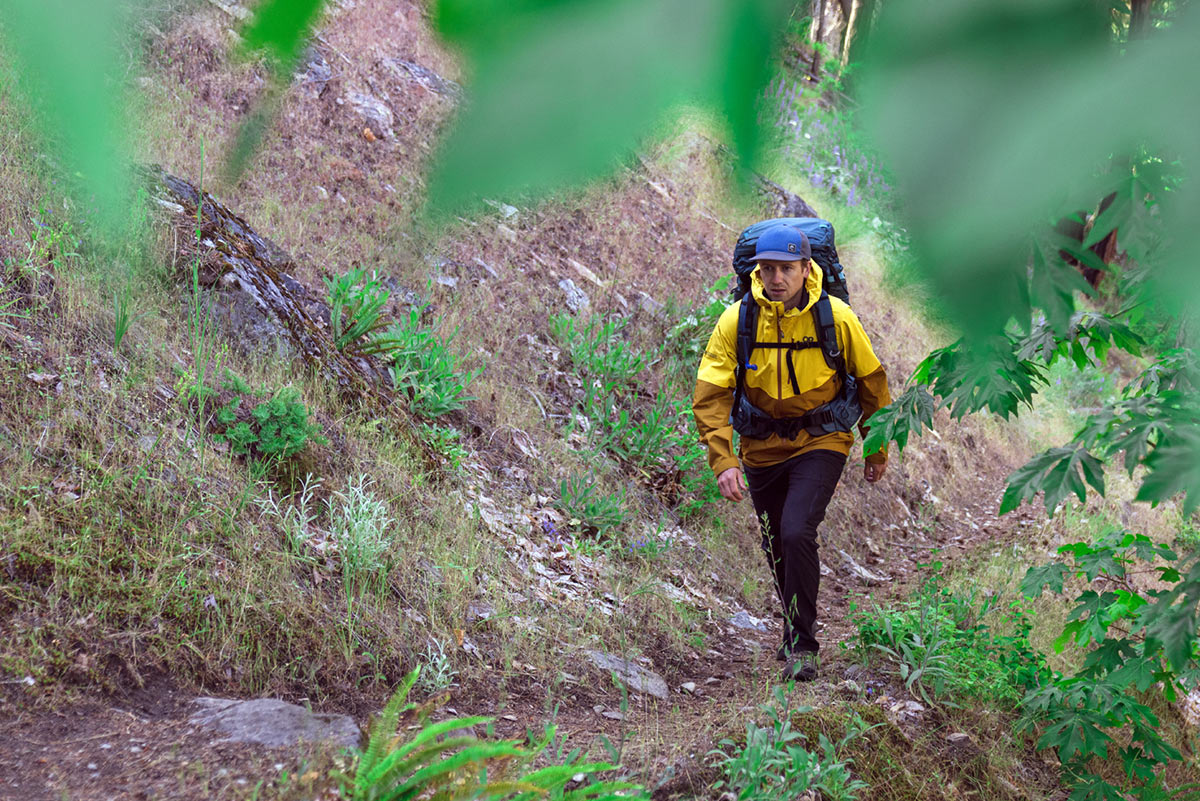
For the price, the Merrell Moab 3 Mid Waterproof is impressively well made: Comfort is excellent, the lacing system is well sorted and includes a metal eyelet at the top for security, and there’s decent protection at the toes and heel (although a direct hit to the toes still stings more than I’d like). From a durability standpoint, the high percentage of mesh is a concern for those who log a lot of trail miles, and it’s a common weak point for tears over time, especially if you need to jam your feet into cracks between rocks or do a fair amount of scrambling. Additionally, while this has never happened in our testing of various Moab models, there are occasional reports of the outsole separating from the boot (likely a glue failure). That said, no piece of footwear has a perfect track record, and we think Merrell pulled off a nice combination of price and performance with the design.
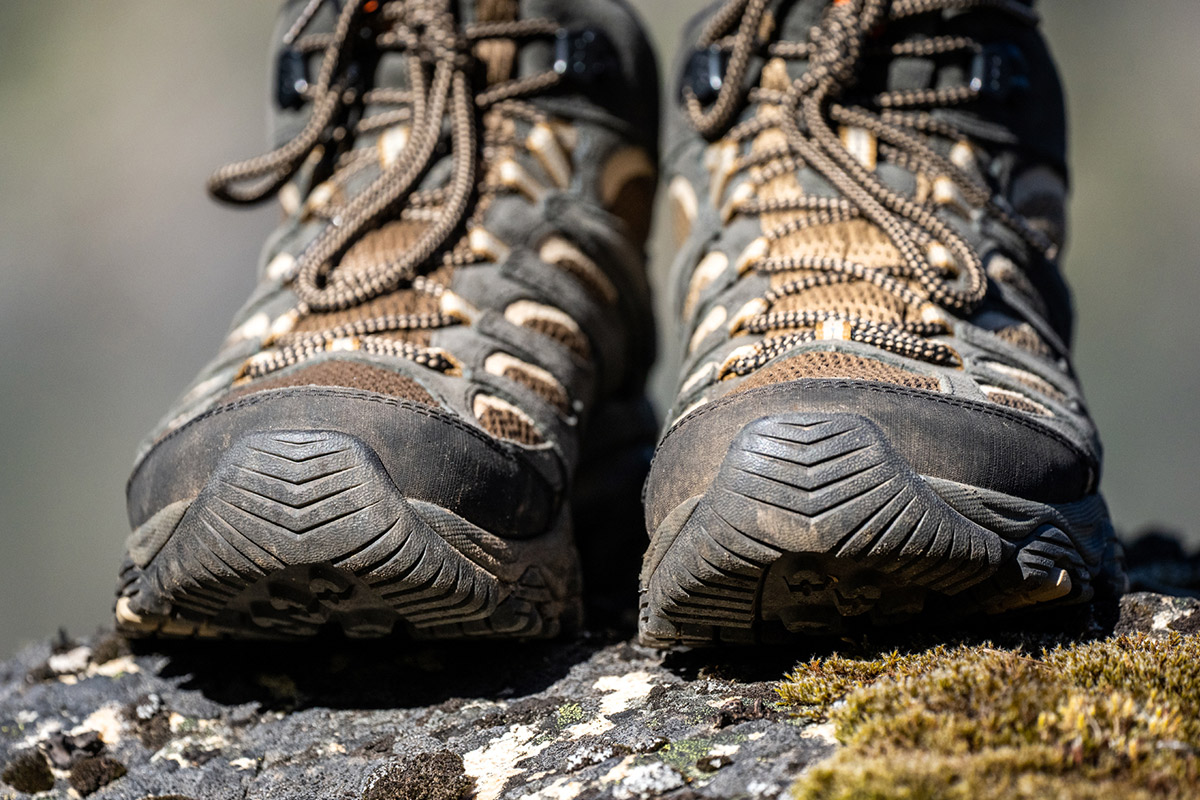
Similar to my experience with the low-top Moab 3 (see our in-depth review here), I found the mid-height boot to have an excellent, true-to-size fit. It was an ideal length to avoid toe bang on descents, and the sculpted insole and solid lacing system kept me from dealing with any heel slippage—something I often encounter with my narrow heels. In addition, there’s sufficient room in the toe box, and the boot never felt sloppy or uncomfortable. All told, it’s the kind of fit that works well with a wide variety of foot shapes, which has been a key to the Moab’s success over the years. And for those with particularly high-volume feet, Merrell also offers the design in dedicated wide sizes.
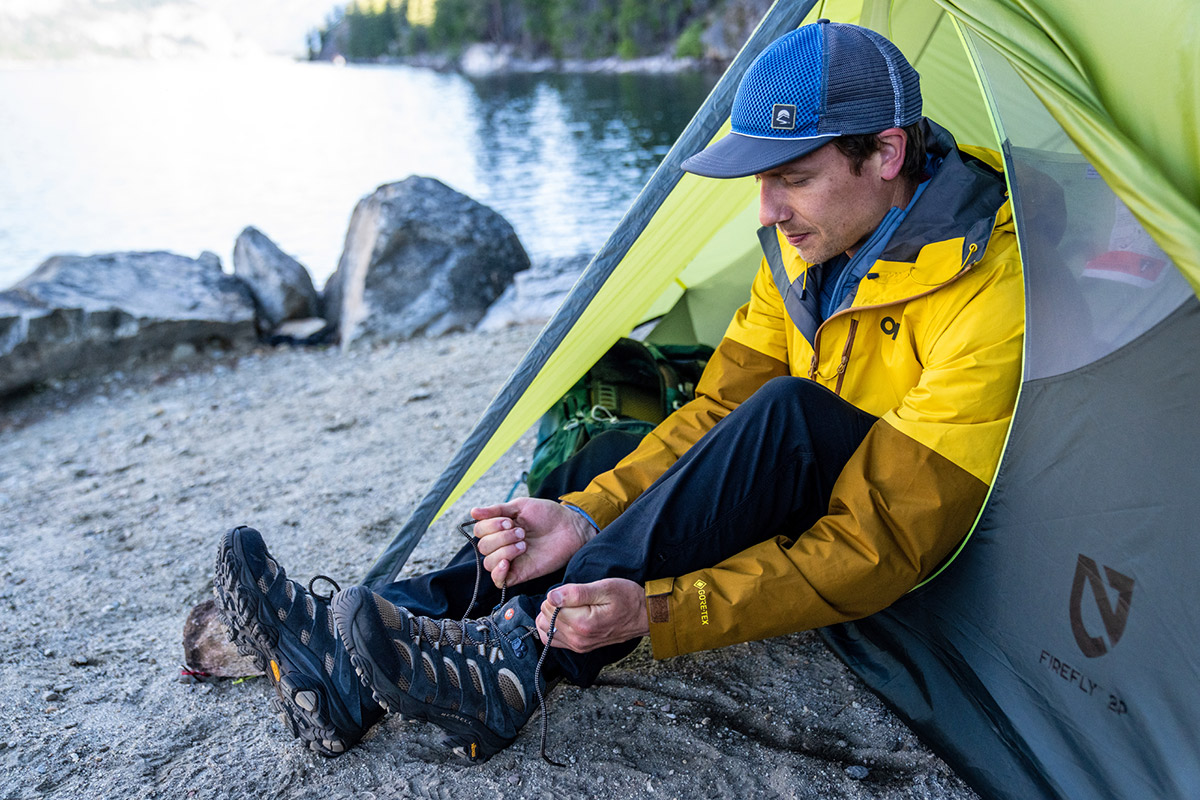
Footwear has lagged behind other outdoor categories in incorporating sustainable practices and materials, but the Merrell Moab 3 Mid Waterproof represents a positive step. Specifically, the latest boot’s laces, webbing, and mesh lining are now all 100% recycled to help minimize waste. Importantly, the upgrade didn't impact the shoe's performance or durability—and the price is even the same as the Moab 2—so we consider these changes an overall win and hopefully a sign of things to come in the industry.
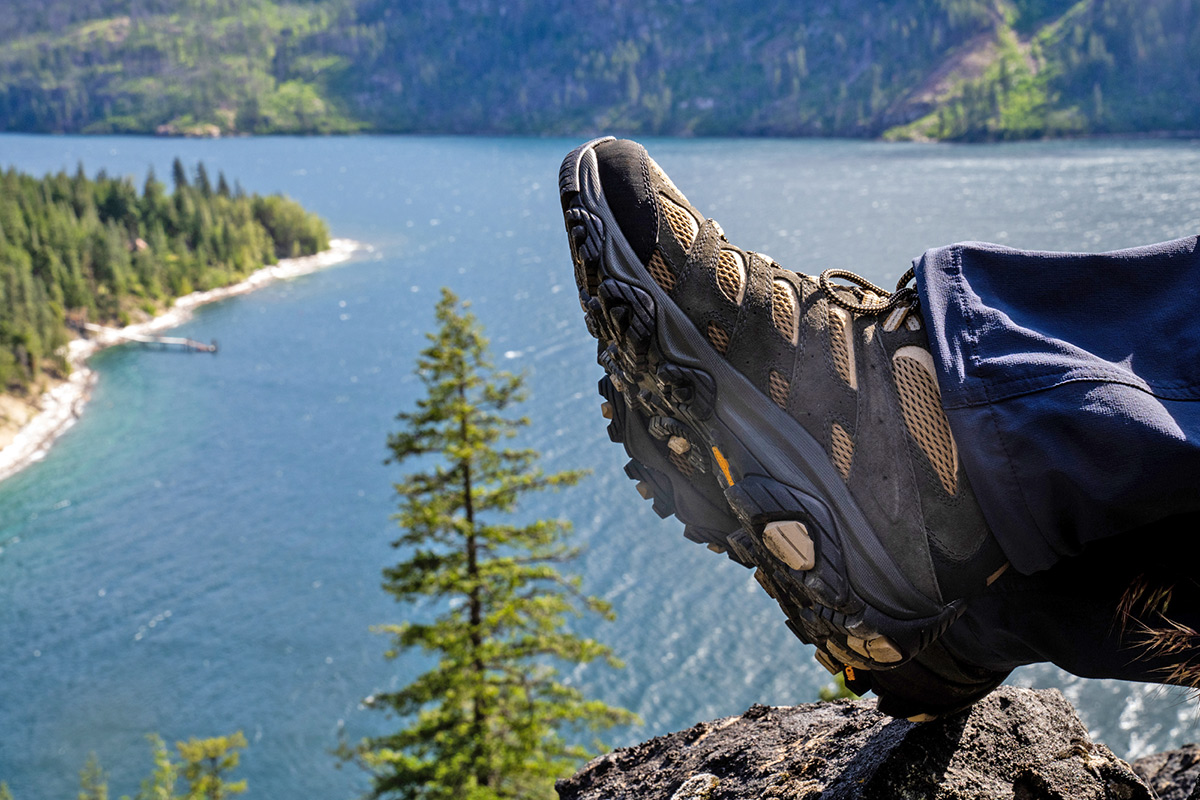
We brought the men's waterproof Moab 3 Mid along for testing, and Merrell sells the same design in a women's model. The women's Moab 3 Mid costs the same and retains an identical feature set and overall construction but comes in different colorways and has a narrower fit. Rounding out the mid-height models, the Moab 3 is also offered in a premium Gore-Tex version for $170 and a more breathable non-waterproof model for $130. Finally, for those who don’t need the ankle-height coverage, the low-top Moab 3 comes in waterproof and non-waterproof variations for both men and women, along with a “Scrap” model that’s made with excess material from production—a nice nod to Merrell’s ongoing sustainability efforts.
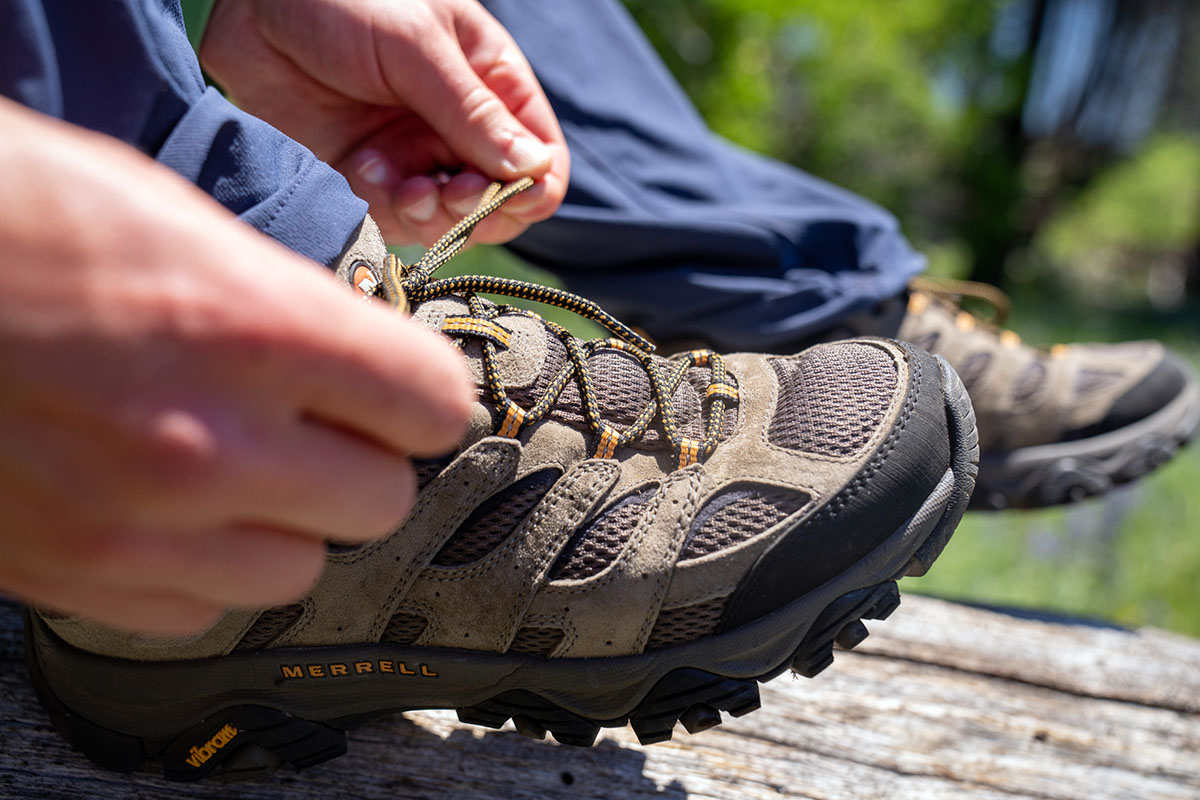
| Boot | Price | Category | Weight | Waterproof | Upper |
|---|---|---|---|---|---|
| Merrell Moab 3 Mid WP | $150 | Lightweight | 2 lb. 4.0 oz. | Yes (in-house) | Leather / mesh |
| Oboz Sawtooth X Mid WP | $180 | Midweight | 2 lb. 6.8 oz. | Yes (B-Dry) | Nubuck leather / mesh |
| Keen Targhee IV Mid WP | $170 | Midweight | 2 lb. 8.7 oz | Yes (Keen.Dry) | Nubuck leather |
| Salomon X Ultra 4 Mid GTX | $175 | Lightweight | 1 lb. 14.0 oz. | Yes (Gore-Tex) | Leather / textile |
| Hoka Anacapa 2 Mid GTX | $195 | Lightweight | 2 lb. 4.0 oz. | Yes (Gore-Tex) | Nubuck leather / mesh |
Merrell’s Moab 3 Mid remains one of the most popular hiking boots on the market for its combination of price and performance. For $30 more, Oboz’s Sawtooth X Mid Waterproof is another well-regarded design. The Sawtooth comes in a bit heavier at 2 pounds 6.8 ounces per pair and uses Oboz’s in-house B-Dry membrane for waterproofing (which was similarly lacking in breathability), but it does pull ahead in a couple key areas. Namely, the Oboz offers better bite on rock and in mud, and it’s the stiffer and more supportive option for shuttling heavier loads over rough terrain. We did find that the Sawtooth felt pretty clunky and cumbersome on the trail, but it’s nevertheless the more capable option for backpacking. For day hikes and carrying lighter loads, however, we’d save with the Moab.
Keen's Targhee IV Mid Waterproof is another standout in the hiking boot market and shares similar intentions to the Moab 3. Like the Merrell, the Keen offers great out-of-the-box comfort and uses in-house waterproofing. The Keen checks in heavier at 2 pounds 8.7 ounces per pair, although its mostly leather construction is more durable and long-lasting than the Moab's mesh-heavy build. On the flip side, the Merrell costs less and provides more stability. In the end, both are great options for everything from easy day hikes to moderate backpacking trips, but we give the slight nod to the Moab for its similar overall performance at a lower price and weight.
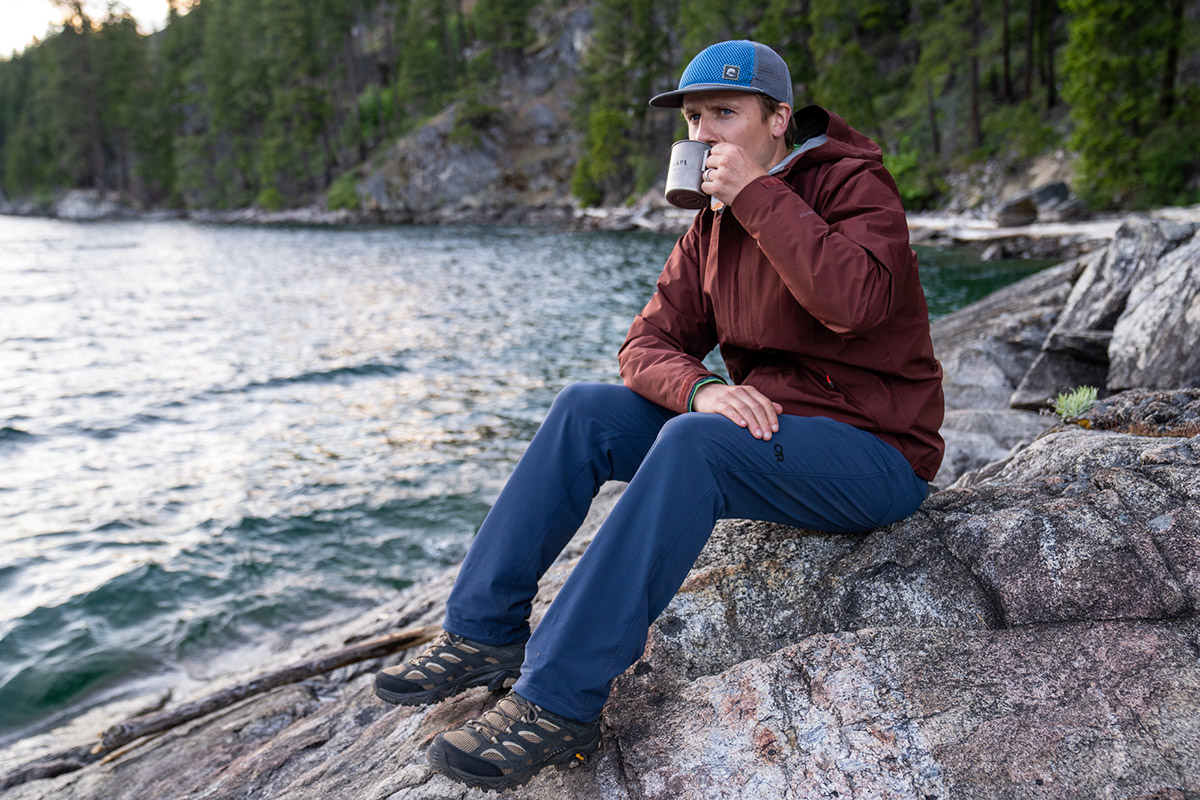
Our top-rated hiking boot this year is Salomon's legendary X Ultra 4 Mid GTX, which has a very different feel than the Moab 3 Mid. Specifically, the X Ultra weighs less (1 lb. 14 oz.) and has a noticeably more agile, running shoe-like personality on the trail. We also love its excellent balance of comfort, protection, and stability—and the X Ultra’s outsole performs better over a wider variety of terrain, including sloppy and wet conditions typical of the Pacific Northwest. The Moab does win out in cushioning with a more well-padded build (especially underfoot), and it’s the cheaper option by $25. But we consider the Salomon to be one of the most well-rounded hiking boots currently on the market and worth the added investment for committed hikers and backpackers.
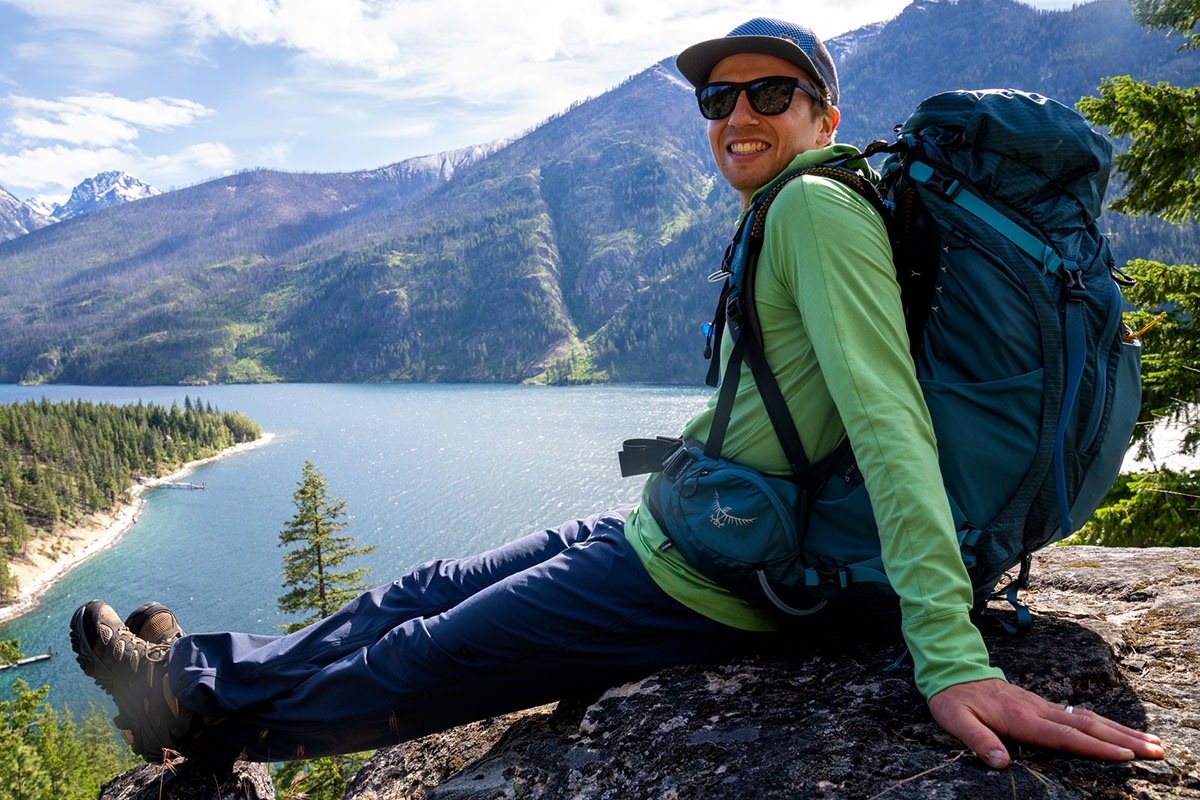
Last but not least is Hoka's Anacapa 2 Mid GTX, which is the most premium option of the bunch. Right off the bat, we’ll note that the Anacapa is a bigger investment at $195, but it’s a sizable upgrade from the Moab in most ways, including a nimbler feel and better stability, traction, breathability, and toughness. Apart from the jump in price, the most notable drawback is that the Hoka has a polarizing look with its thick cushioning (certain colorways highlight the midsole more than others). But if you don’t mind the styling, we think the Hoka is far and away the more capable boot for those who plan to backpack more than they hike or who like to move quickly on the trail (for more, see our in-depth Anacapa 2 Mid review).
If you’re thinking about buying gear that we’ve reviewed on Switchback Travel, you can help support us in the process. Just click on any of the seller links above, and if you make a purchase, we receive a small percentage of the transaction. The cost of the product is the same to you but this helps us continue to test and write about outdoor gear. Thanks and we appreciate your support!
Depending on the seller, most products ship free in the United States on orders of $50 or more. International shipping availability and rates vary by seller. The pricing information on this page is updated hourly but we are not responsible for inaccuracies.